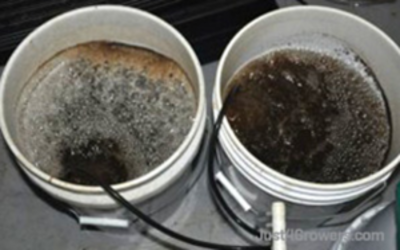What is compost tea?
To keep it simply, compost tea is a liquid fertilizer and full of biologically active compounds, which slow down a plant’s disease. The tea is made by soaking small quantity of remaining compost in water and adding food source (brown sugar or jaggery) to feed the hungry microorganisms inside the soil. The process of evaporation of the water gives to present micro-organisms all the tools they need to reproduce. so once the mix is done brewing you are left with a nutritionally rich, well-balanced supplement with incredible value as an organic liquid fertilizer.

Preparation Method of compost tea fertilizer:-
Caution: Make sure to use a finished compost. unfinished compost can be contain harmful pathogenic, and compost that is too old may be nutritionally deficient
1. Fill a 5 gallon bucket 1/3 full of quality finished compost.
2. Fill with water to a few inches below the top.
3. Allow the mixture to rot for 3-4 days.
4. Stir the tea as often as you can.
5. Filter the mixture in a bucket through a cheesecloth or any other porous fabric. Add the remaining compost to your garden or put it back in your compost bin.
6. Dilute the remaining liquid with water using a 10: 1 ratio of water to tea. (The contents in your water cans should have the look of a weak iced tea.
7. Spray fertilizer using foliar-spray on soil or leaves.
Benefit:-
1. Better plants growth in the form of good taste vegetables, bigger blossoms and greener leaves.
2. Increase of beneficial organisms, that enhances the immune system of plants.
3. Plenty of nutrients for the plants that are easily absorbed directly through the plants roots.
4. Encourage the growth of root systems to help your plants remove nutrients from a farther down.
5. Provides an all-natural alternative to harsh chemical composts that cause harm to native plants, insects, wildlife, and even humans.

Poonam Singh
Poonam Singh, M.Sc.(Bio-Chemistry), Content writer, Self Shiksha, Lcoatips, Candidviews, Quikpills and Former Research Director at NEEW
